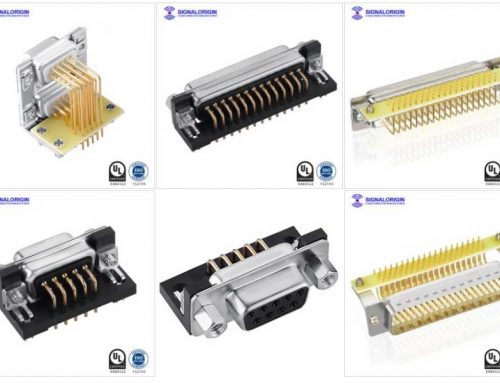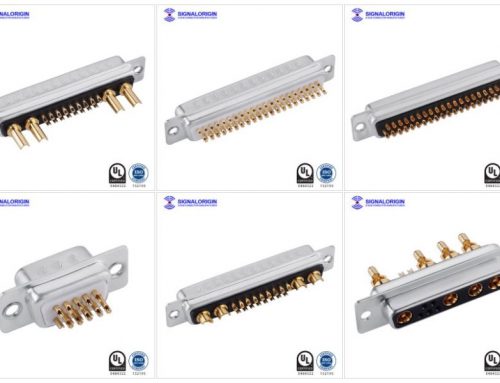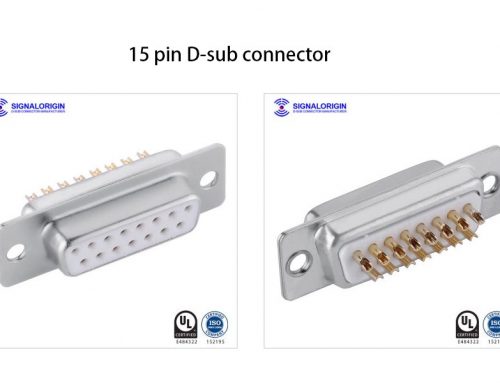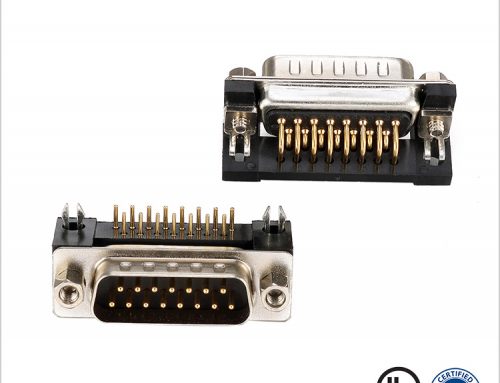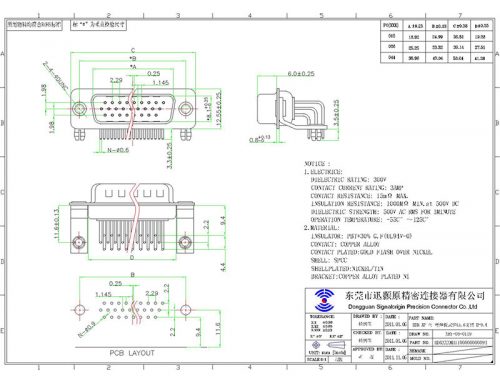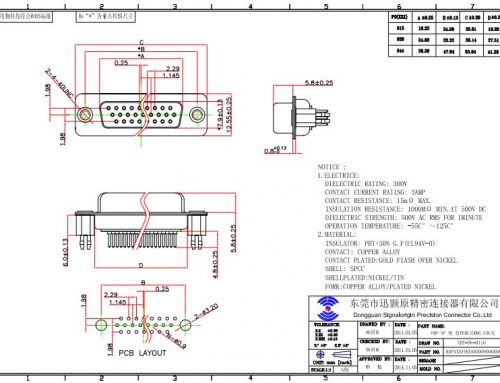DB 15 connector is part of the D-sub miniature (D-sub) connector plug and socket family for computer and communication devices. DB-15 pins are arranged in rows of two, as one eight-pin row above a seven-pin row.
- DA-15 denotes a D-sub with a A shell size and a 15-position contact configuration
- DE-15 denotes a D-sub with a E shell size and a 15-position contact configuration
| Normal density | High density | ||
|---|---|---|---|
| Name | Pin layout | Name | Pin layout |
|
DA-15 (DB-15) |
8-7 |
DE-15 |
5-5-5 |
The D-sub series of connectors was introduced by Cannon in 1952. Cannon’s part-numbering system uses D as the prefix for the whole series, followed by one of A, B, C, D, or E denoting the shell size, followed by the number of pins or sockets, followed by either P (plug or pins) or S (socket) denoting the gender of the part. Each shell size usually (see below for exceptions) corresponds to a certain number of pins or sockets: A with 15, B with 25, C with 37, D with 50, and E with 9.
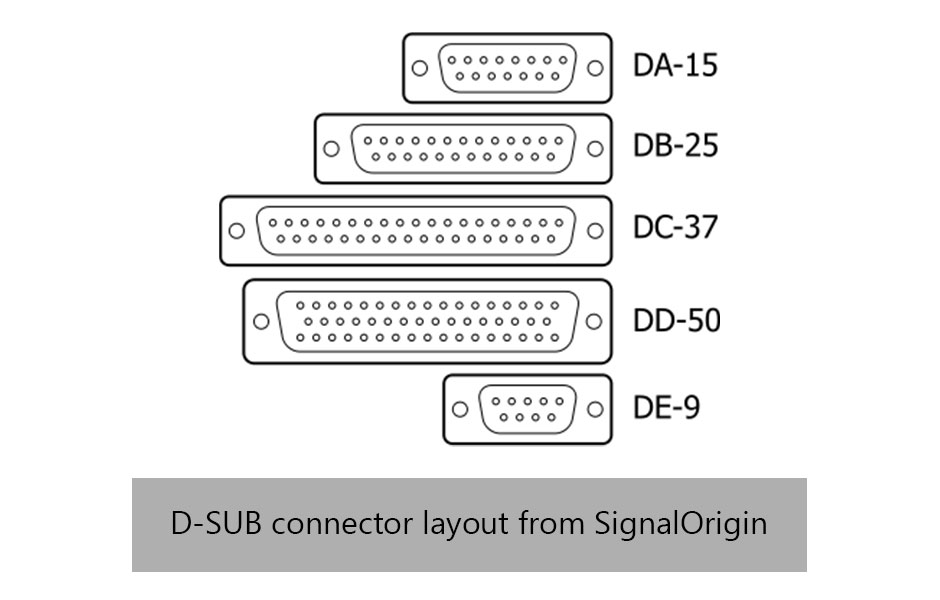
You may like our 15 pin D-sub connector
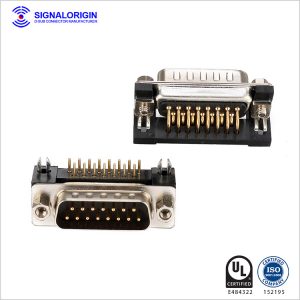 |
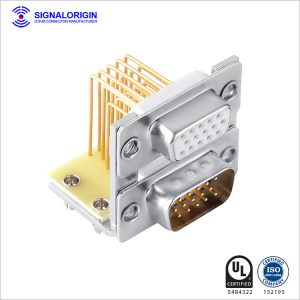 |
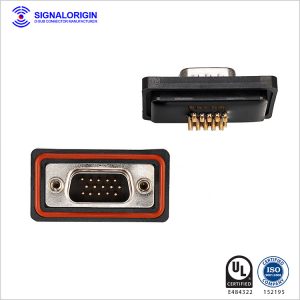 |
Typical applications of DB 15 and DE 15
- Network ports
The Attachment Unit Interfaces that were used with 10BASE5 “thick net” in the 1980s and 1990s used DA15 connectors for connectivity between the Medium Attachment Units and (Ethernet) network interface cards, albeit with a sliding latch to lock the connectors together instead of the usual hex studs with threaded holes. The sliding latch was intended to be quicker to engage and disengage and to work in places where jackscrews could not be used for reasons of component shape.
- Computer video output
Later analog video (VGA and later) adapters generally replaced these connectors with DE15 high-density sockets (though some early VGA devices still used DE9 connectors). DE15 connectors are similar to DE9 connectors.
Many Apple Macintosh models, beginning with the Macintosh II, used DA15 sockets for analogue RGB video out. The earlier Apple IIgs used the same connector for the same purpose, but with an incompatible pinout. A digital (and thus also incompatible) RGB adapter for the Apple IIe also used a DA15F. The Apple IIc used a DA15F for an auxiliary video port which was not RGB, but provided the necessary signals to derive RGB.
- Game controller ports
DA15S connectors are used for PC joystick connectors, where each DA15 connector supports two joysticks each with two analog axes and two buttons. In other words, one DA15S “game adapter” connector has 4 analog potentiometer inputs and 4 digital switch inputs. This interface is strictly input-only, though it does provide +5 V DC power. Some joysticks with more than two axes and/or more than two buttons use the signals designated for both joysticks. Conversely, Y-adapter cables are available that allow two separate joysticks to be connected to a single DA15 game adapter port; if a joystick connected to one of these Y-adapters has more than two axes or buttons, only the first two of each will work.
The IBM DA15 PC game connector has been modified to add a (usually MPU-401 compatible) MIDI interface, and this is often implemented in the game connectors on third-party sound cards, for example the Sound Blaster line from Creative Labs. The “standard” straight game adapter connector (introduced by IBM) has three ground pins and four +5 V power pins, and the MIDI adaptation replaces one of the grounds and one of the +5 V pins, both on the bottom row of pins, with MIDI In and MIDI Out signal pins. (There is no MIDI Thru provided.) Creative Labs introduced this adaptation.
The Neo Geo AES game console also used the DA15 connector, however the pins are wired differently and it is therefore not compatible with the regular DA15 PC game controllers.
- Other
The complete range of D-sub connectors also includes DA15s (one row of 7 and one of 8), DC37s (one row of 18 and one of 19), and DD50s (two rows of 17 and one of 16); these are often used in industrial products, the 15-way version being commonly used on rotary and linear encoders.
For video applications the DE15HD connector has been replaced by DVI, HDMI and DisplayPort connectors. A notable exception to this replacement is on the few analog CRT monitors still in use: the analog version of the DVI connector is similar in price and more complex than the D-sub, so the shift away from D-subs was slow in this case. For the majority of consumer applications, D-sub serial and parallel connectors have been replaced by the physically much simpler and cheaper IEEE 1394 (FireWire), SATA, USB, Thunderbolt or modular connectors. These connectors tend to be less rugged and durable than D-sub connectors—for example, the SATA connector as part of a cable assembly is specified to withstand only 50 manual insertions—but the robustness of the D-sub is more than is needed in many consumer product applications.
You may also like What businesses does SIGNALORIGIN engage in?
If you’re interested in purchasing D-sub connectors, be sure to check out the wide range of standard and custom products from SIGNALORIGIN.
Learn more about our Electrical connector
Contact us
 |

